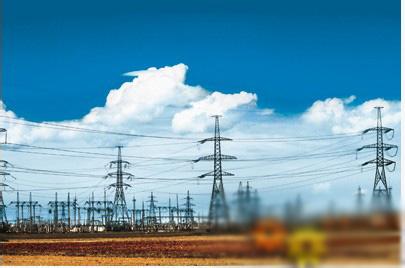 From September 25th, the National Development and Reform Commission will increase the price of renewable energy tariffs, denitrification tariffs, add new electricity prices, support the development of renewable energy, and encourage coal-fired power generation companies to conduct denitrification, dust removal, and improve air quality.
From September 25th, the National Development and Reform Commission will increase the price of renewable energy tariffs, denitrification tariffs, add new electricity prices, support the development of renewable energy, and encourage coal-fired power generation companies to conduct denitrification, dust removal, and improve air quality. However, it should be noted that this tariff adjustment is achieved through the structural adjustment of the on-grid electricity price of coal-fired power generation companies without increasing the level of sales electricity prices, and will not increase the burden on residents and enterprises. The adjustment of the on-grid tariff is caused by the reduction in the price of thermal coal.
From the perspective of talking about the overall situation, maintaining stability, and safeguarding the interests of all parties, this price adjustment can serve as a model, and it is not controversial for the neighbors. However, when you examine the logic of this price adjustment, you will find that the NDRC actually increases the price of electricity and the price of environmental protection electricity by lowering the price of feed-in electricity.
According to the plan of the National Development and Reform Commission, the compensation rate for denitrification electricity price of coal-fired power generation enterprises has increased from 0.8 cents per kilowatt-hour to 1 cent; and the dust removal and dust emission concentration has been reduced to less than 30mg/m3 using new technologies (less than 20mg/m3 in key areas). ), and the dust removal cost of coal-fired power generation enterprises that have been qualified by the environmental protection department shall be appropriately supported, and the electricity price compensation standard shall be 0.2 cents per kilowatt-hour.
Seemingly insignificant, the total environmental protection electricity price was increased by 0.4 cents per kilowatt-hour, but in the 4.8 trillion kilowatt-hour large-scale electricity consumption of the country, the increase in electricity price was 20 billion yuan. Under the stringent emission standards, power generation companies have obtained a policy dividend in this round of price adjustments.
Since July 1, 2014, existing thermal power plants will implement new standards for emission of atmospheric pollutants, and the emission limits for sulfur dioxide, nitrogen oxides, and soot concentration will be more stringent. For power generation companies, the new emission standards are "the most stringent in history."
The power industry believes that it is a “fighting fast cowâ€, the environmental protection emission standards are too high, the policy changes too fast, and the lack of electricity pricing and other supporting policies. Previously, the decentralized tariff subsidy standard of 0.8 cents/kWh failed to cover most of the cost of power plants, and there were many proposals for increasing the level of subsidies.
Obviously, the demand for thermal power was met. However, it must be noted that for individual power plants, the reduction in the on-grid tariff may offset the increase in the price of environmental protection electricity.
The background of the increase in renewable energy surcharges is that the subsidy funds are stretched and the gap is growing. According to the author's understanding, the latest renewable energy subsidy was issued in December 2012 with an amount of 11.3 billion yuan. The funds were used for subsidies between October 2010 and April 2011 after a delay of one and a half years. Subsidies after July 2011 have not yet been implemented.
According to the National Development and Reform Commission, as of the end of 2011, the funding gap was 10.7 billion yuan. Without further raising the standard, it is expected that the additional funding gap for renewable energy prices in 2015 will reach about 33 billion yuan.
Based on this, the NDRC decided to raise the subsidy standard from 0.8 cents per kilowatt-hour to 1.5 cents, and it is expected that the subsidy will increase by 20 billion yuan. For renewable energy companies, they have to applaud the NDRC's price adjustments.
However, if you trace back to the formation mechanism of renewable energy, you will find that the price mechanism is being artificially complicated.
According to the "Renewable Energy Law," renewable energy addition refers to the standard of fare increase that is shared across the country in order to support the development of renewable energy. The power grid enterprises shall collect and collect electricity charges from end users according to the standards and scope uniformly approved by the price administration department of the State Council, and keep separate accounts for special expenses.
Obviously, the object of the additional renewable energy addition should be electricity users, rather than power generation companies, not to reduce the on-grid tariff to achieve. The increase in the subsidy standard actually blurs the boundary between the on-grid tariff and the sales price.
It is more logical to implement the coal-electricity linkage mechanism. On the basis of the drop in the price of thermal coal, the price of on-grid electricity was lowered, and the structure of sales price was adjusted synchronously. The failure to fulfill coal-fired linkages was explained by the National Development and Reform Commission. "We have not yet reached the one-year linkage period."
Some industry commentators said that this seemingly smart price adjustment is a manifestation of confusion. Coal-fired power generation, environmental protection electricity price for desulphurization, denitrification, dust removal, and other renewable energy sources each have a price formation mechanism and a theoretical system, which together make the electricity price system more complicated.
Cast Iron LV 3PH Asynchronous Motor
Cast Iron Lv 3Ph Asynchronous Motor,Three Phase Asynchronous Cast Iron Motors,Cast Iron Motors,Cast Iron Electric Motor
Yizheng Beide Material Co., Ltd. , https://www.beidevendor.com